This is a very long article, about meaningful work and about imagining possibilities. Hope you find it inspiring, and worth the read.
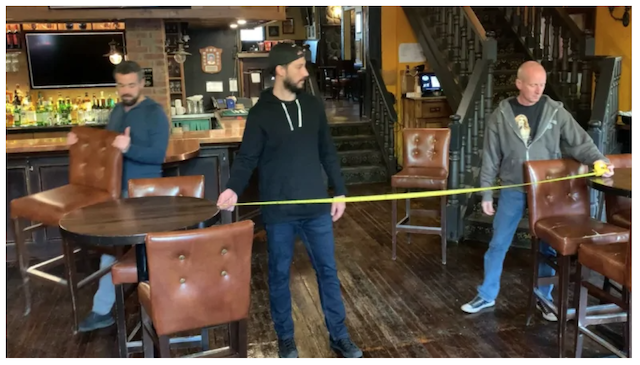
Calgary restaurant workers separate tables to meet new social distancing rules prior to reopening. Image from the CBC’s Bryan Labby.
REIMAGINING OUR WORK
I‘ve written often about our modern world being one of staggering imaginative poverty. The signs of this poverty are everywhere: in the utter unoriginality of almost everything coming out of the film industry, the music industry, arguably most of the creative arts, modern fiction and poetry, philosophy, political and economic thinking, and of course technology, where indices of ‘innovation’ suggest it’s in serious decline.
Instead our energy goes into special effects and other ‘wow’ distractions from the endless bad news of the day, or into self-preoccupation (compare how many modern novels are written in the first person compared to a generation ago — twice the proportion according to a recent study), or into rage against seeming helplessness and hopelessness, or into inventing useless forms of novelty, like financial ‘products’ that repackage worthless investments and other complicated cons in just about every industry. And of course, much of our energy goes into just struggling through the day coping with the dysfunctional way things are.
Most modern entrepreneurs’ dreams of “success” are now seemingly to become billionaires by starting tech companies and then sell them off and retire at 30. It is not about doing anything of use to anyone, let alone doing anything new or risky.
So now, we’re struggling through a pandemic crisis that has ground most of the things that we do do, to a halt. For many of us in the unnecessariat these are more or less useless, make-work activities anyway (what David Graeber calls Bullshit Jobs). The “flunkies, goons, duct-takers, box-tickers, and task-masters” who do these jobs are understandably nervous — there’s a good chance these jobs will be eliminated permanently, especially as the early-2020s deep economic recession feeds into the predicted mid-2020s Greater Depression.
But a lot of people, many of them in high-risk, low-paid jobs, are and will remain what we are now calling Essential Workers (medical staff, care workers, teachers, garbage collectors, janitors, delivery people, grocery store workers, farmers etc). This is of course not how the government and the powerful define “essential services” (which include their own jobs, the financial and banking industry, the military, the energy industry, the mainstream media, lawyers, the transportation industry, a slew of manufacturing jobs, much of the technology sector, and most of the construction industry, among other jobs that are in no sense actually essential).
And then there is everyone else. Not Essential, and not considered essential by the rich and powerful, but not working in unnecessary, Bullshit Jobs either.
THE SEARCH FOR A BETTER WAY
The question that many of us are now asking (other than How’s it going to end?) is now: Is there a better way? For the truly Essential jobs, that question is being asked with a sense of urgency but not much forward thinking: Is there a better way right now for a while that runs less risk of pandemic infection?
But for many, either laid off at home or with plenty of idle time at workplaces where volume of business is down 50-90%, it’s a deeper, more existential question: Now that I’m not totally preoccupied with doing my job — Is there a better way to do the work I do? Is this really what I’m meant to spend most of my waking hours doing?
If we lived in a world that exercised and practiced our imaginations, as many of us did before technology and entertainment dumbed everything down and replaced the need to imagine with the simpler need just to react, we would probably be very capable of coming up with a ton of better ways to do just about everything. But not anymore.
We have forgotten that the need of the person drilling into wood to make a piece of art or craft is not for a drill — faster, quieter, more efficient, or more ergonomic. It is for a hole. If we want to escape imaginative poverty, we are going to have to relearn and re-practice imagining how else we might meet the need for a hole, rather than how we might add “features” to the drill, or connect it to the internet to do something flashy that could not be done otherwise, just to produce the same damn hole. In many industries, what is called “innovation” has forsaken responding to what is needed in favour of what is possible (which requires much less imagination).
This is true for just about everything we produce, and, as desperate as is our need to produce monumentally less of all the crap we don’t need at all, we also need to rethink — and reimagine — how we produce just about everything, with an eye to increasing local resilience to crises, and at the same time decreasing our ecological footprint.
WHAT DO WE REALLY NEED?
Let’s consider restaurants for example. What are the needs that restaurants meet, in light of our CoVid-19 discovery that they really aren’t Essential Services? Perhaps our longing for their re-opening suggests that the needs they meet aren’t entirely about the food, and that the needs they meet are actually pretty essential to our health.
So rather than thinking just slightly imaginatively about how restaurants could reopen while still protecting staff and customers from pandemic infections, let’s take a step back and ask what the needs are that they fill, how those needs might otherwise be filled, and what are the other important needs (that they have never tried to meet) that they might be able to meet with a little more imagination.
I’m talking here about healthy human needs — those that enrich us, make us genuinely happy, bring real pleasure, heal us from real pain. I’m not talking about pandering to the unhealthy needs that arise when we lose capacity to get what we need in healthy ways — unhealthy needs like escapism, distraction, indulgence, thrill-seeking, or inuring ourselves to reality through acts of violence, anger, vengeance, ruthless competition and hate. We can meet a narcissist’s needs in the short run by indulging them, but in the long run we’re not doing anyone any favours.
Last year I wrote an article that tried to distil, from several lists, what our basic human needs are. I identified eight:
- the need to belong to, connect and collaborate with a safe and engaging community, starting with attachment to one’s mother in the critical first years of life
- the need for meaning and purpose in one’s life, including meaningful work
- the need to be valued, appreciated, and heard
- the need to be optimistic about the future for oneself and loved ones
- the need for control and a degree of autonomy over one’s life and work
- the need to be regularly and closely in touch with beauty, joy, wonder and the natural world
- the need for a sense of belonging to place, and home
- the need for freedom from chronic stress (financial, physical etc.) and the time and space to recover from it (including getting adequate sleep)
I’m unsure whether the need to create (and to co-create), and the need for the freedom to be authentically oneself, should be added as ninth and tenth essential needs. Let’s add them for the moment.
Some of the obvious ways we meet these needs when we visit restaurants are by providing the pleasures of:
- social interaction and social stimulation, including creating and deepening relationships, and finding sounding boards for information, ideas and feelings (sensemaking, dialogue and dialectic) (meets needs #1, #3 and #10)
- intellectual stimulation (#1, #2 and #9)
- learning and doing new things (#1 and #2)
- various forms of play (#1, #2, #6 and #8)
- engaging in sensory and aesthetic pleasures (#6)
- sharing a joyful, local shared “third place” (#6 and #7)
- saving time (preparing meals, which for some is a chore that precludes doing other valued or urgent activities) and giving ourselves a break (#8)
These seven essential pleasures are not unique to restaurants and bars: I would argue they are the drivers for many other activities, from ancient potlatches to modern potlucks and “cocktail parties”, games nights, coffee klatches and coffee houses, tea ceremonies, neighbourhood music jams and song circles, and even a lot of non-food-related activities like yoga, gym workouts, group meditation and chanting circles. In all of these there is a certain sense of collective ritual that pleases and enriches us.
So how might we provide these seven pleasures, perhaps even better than we do now, and even if we have to continue to exercise social distancing? Assume we’re starting with a restaurant or other social gathering place with amenities. How might we better provide these pleasures and hence meet these needs? And what additional, novel opportunities might we start to offer with our reinvented ‘social space’ service that meet these and other essential human needs?
In other words, what’s a better way to do this, to be of use to those we care about with the skills, capacities and resources we have to offer?
Ideally we’d do this investigation with a diverse group, but let me get the ball rolling and, if you’re interested, jump in with your own thoughts.
I’d start by acknowledging that these activities have evolved to be the way they are for a reason, and messing with their essential elements unless we have to, would be an error. We’re not out to change people’s behaviour, we’re looking for, to borrow a bit of business jargon, ways to “enrich the user experience”.
I also think it’s important to acknowledge some needs that these spaces wish they could fulfil, but often cannot:
- The desire to include all our loved ones, and some people we would love to meet but can’t, in our gatherings, because of physical distance, for example
- The desire to meet new friends and new partners (both personal and business) in these spaces
- The desire to be less of a spectator and more of an active participant in these spaces (eg not only eating a great meal, but learning about its ingredients and process)
- The desire for broader connection (most of the time) with others or even everyone in the place, to make the place a true community space, a place that is collectively “ours” rather than one we just “rent” for a while.
STARTING WITH TECHNOLOGIES: REIMAGINING SHARED SPACES
Most of our new technologies offer us a slew of new things that can be done, without any reference to whether these things actually have any value. Their lazy and unimaginative offerers simply keep throwing new variations at us, and leave it up to the “market” to see what users seemingly want. Their hope is that the technology will be addictive enough that the want will become a need, and then they can sell out and retire. As a result, most of the technologies in ubiquitous use today are horribly designed and provide an awful user experience, with Facebook and Twitter being the absolute worst.
So, starting with needs — with the hole that is needed and not the drill or any of its fancy attachments — how might we design some technologies to help us ‘reinvent’ the restaurant or other social-gathering experience?
I would start with an appreciation that people want any new technology to emulate as closely as possible the behaviours and actions that it presumes to enhance. That means using it should be as simple and intuitive as opening a door or scanning a menu.
And I would start with the idea of presence. More than just being “immersive”, a well-designed technology would achieve a level and sense of presence nearly indistinguishable from reality (some of us believe our whole sense of reality is actually just a clever wetware illusion produced inside our bodies anyway, so this shouldn’t be too hard a feat to pull off).
But we really can’t hope to capture the sense of presence on the tiny screens of cell phones. If we really want to emulate the sense of being with others using technology, we will need big, ultra high definition monitors. If you’ve watched any videos in 4K, you’ve probably realized that they convey a completely different sense of presence, of actually being there, compared to low-def video. A surprising number of people now have large, inexpensive, 4K-compatible screens, that are used mostly for watching mind-numbing films and pap reality series, but which could be used for a much more powerful connection with people we care about right from our own homes.
But of course a big 4K screen isn’t enough for presence. Until VR technology can evolve past the clunky headsets, what might be useful is technology that monitors what we are specifically looking at and adjusts the screen image to focus on that, to simulate what it is really like to move around in another’s presence. Technology that responds to our head and eye movements in an intuitive way.
Another thing that’s needed (and regular Zoom users can attest to this) is technology that can blend multiple sounds being made simultaneously from different places into a single signal. It’s so artificial when each voice has to end before the next begins, or when two people speak (or sing) at once and the result is an unintelligible screech or pop. There is no reason why we can’t improve our technologies so that their sound closely emulates the conversation (or music) we would hear if we were all in the same room.
Ideally, this higher-quality, more realistic video and audio could be incorporated into a lightweight and unimposing immersive headset that would allow more natural interaction to occur ‘virtually’, but my sense is that’s still a way off, and it may always be too strange for many to ever agree to use. In the meantime, large high-quality video and integrated, high-quality audio could get us most of the way there.
My sense is also that people are rarely focused on one thing at a time in their ‘real’ environment, so even better than one large 4K screen would be two, with each ‘remembering’ one of the last two things you were looking at — your virtual ‘dinner’ colleague and the menu, for example.
The next improvement I’d like to see is shared 4k ‘environments’. As fascinating as it is to look at the living rooms of strangers on Zoom, if I’m sharing a conversational experience with faraway friends, colleagues and family members, it would be wonderful if we could ‘seem’ (from our pictured ‘backgrounds’) to be actually in the same place, with the same background. That could be as mundane as one person’s living room, or as rich as the background of Venice as seen from a virtual canal boat. Imagine taking a 4K virtual ‘tour’ of the Pyramids, or the Moon, ‘with’ a group of people all over the world all hearing and seeing the same thing. The ultimate dinner cruise, even if you each have to cook the same thing in your individual ovens to experience it!
This is what I mean by enhancing the user experience. The shared experience could ‘happen’ in a place that all participants love or fondly remember, or a place that none has ever seen before. It could be a beach in Bali, or, if the experience is to be educational and not just recreational, a factory floor of a world-class manufacturer, or a deepwater undersea exploration, or the rim of a Black Hole. Or something as prosaic as the aisles and shelves of the store one of you is shopping at on behalf of the others. A virtual ‘shared’ space anywhere in the world (or beyond it).
OTHER TECH-ENABLED WAYS OF ENHANCING THE VIRTUAL SHARED-SPACE EXPERIENCE
Since I’m dreaming, here are some more things that could make for a larger-than-life, or better-than-ordinary user experience: The ability to invite people (those you know, those you’d love to get to know, or anyone who might know what you’re trying to find out) to just seamlessly “drop in” to your conversation, based on a very sophisticated form of Invitation. So instead of asking a question on Quora, you could invite people to just drop in on your permaculture garden, look at the setting and the soil nutrient data, and suggest just what is needed to deal with the problem of the wilting plants. Learning how to craft engaging, irresistible invitations is potentially a total game-changer for how we learn, how we meet new people, and how we collaborate. Sites like Quora have destroyed the myth that you need to pay people to get useful (and even expert) counsel, and that the most valuable knowledge is only accessible by the select few. (Sadly, Quora is also drowning in narcissists and awash in unsupported opinions and just plain wrong information. But that’s another problem.)
What else? If your conversation is with people you’ve just met or don’t know well, it would be great to have ‘permissioned’ access to the personal Profiles of everyone in the ‘space’, to scan while you’re talking with them to get a sense of context for where they’re coming from, and how knowledgeable and trustworthy they are about what they’re saying. This is one of the key advantages of another promising but failed “presence” technology, Second Life. Whether you’re just looking for a friendly and knowledgeable conversation or the start of a beautiful relationship, the Profile, if available to browse with a single click, might let you know what you have in common, and what they care about, and hence what is probably most fruitful to talk with them about (avoiding long and awkward silences).
A few years ago there was an independent app developed for Facebook (which Facebook naturally shut down) that scanned all your “friends”, and by looking at those friends’ friends and their overlap, automatically ‘clustered’ those friends into those with the greatest commonality. It couldn’t tell you what they had in common, of course, but for the user it was immediately obvious, and enlightening. I found that my ‘networks‘ were a mix of physical communities (people in each of the places I have lived), communities of practice and capacity (people I have worked or collaborated with on projects or activities or share expertise with), communities of interest (people I share hobbies or affinities with), and communities of identity (people I share beliefs with). What I would love is a tool that would suggest who else might fit into each of these communities that I might want to converse and ‘share space’ with, and how I might, through existing contacts, explore short impromptu meetings with them (yes I know LinkedIn attempted to do this, but hey, we all know it didn’t work because it didn’t acknowledge the reality of power politics).
And I would love a more robust and intuitive way of signalling how I’m feeling, and ‘seeing’ how others in the ‘shared space’ are feeling. The ‘thumbs up’ icon is the right idea but it lacks subtlety and doesn’t begin to cover the range of things I’d like some means to convey. Just like ‘private messages’, such a feature would allow me to be selective in who I signal to.
And I would love to be able to emulate physical actions (hugs, handshakes etc) in virtual spaces in a more realistic way.
So: More natural emulation in ‘virtual’ shared spaces of how we behave in ‘physical’ spaces, including more vivid and natural video and audio, simulation of virtual shared spaces where all participants ‘feel’ they are in one environment (which could be anywhere imaginable), simpler, more powerful capacity to invite others to drop in to the space (and suggestions on who to invite), capacity to ‘sidebar-view’ information about other participants and volunteered information on how they’re feeling, and virtual emulation of a wide range of important and demonstrative physical gestures. Those are just some of the ways I think we could reimagine ‘virtual’ shared spaces to be more natural, more pleasurable, and better able to meet real, healthy human needs.
REIMAGINING THE PHYSICAL SPACE, TOO
There is only so much we can do until we are once again able to convene in real physical spaces again. Once we can, there are plenty of other things we can do to enhance the ‘user experience’ in restaurants and other shared physical spaces.
For example, these establishments could provide additional flexibility in their physical space to allow “breakout rooms” analogous to what Zoom offers. These rooms might allow quiet conversations of a “Philosophers’ Café” style, for example. They could host community events, or open mics, or theatre or film showings, or workshops (playshops) or games nights or cooking presentations by one of the chefs, or other educational, recreational or community-building events. This would require some flexibility in movable walls, or outside tents or other innovative “breakout room” schemes and I’m not expert enough to know how they might happen, but I’m sure the Japanese, for example, would have some ideas, as their homes are often designed to be reconfigurable. This would, of course, sacrifice the noisy and boisterous sports-bar/party atmosphere that some restaurant-goers enjoy, but I think the trade-off would be worth it.
Restaurants could also provide “electronic menus” that would allow diners to learn what the precise ingredients (and even recipes) of their favourite menu items are, the nutritional value “score” of each of the menu options, and/or which menu items have been highest rated by customers over the past 24 hours. They could even offer a “kitchen-cam” that would allow solo diners and prospective gourmets (those for whom the restaurant visit really is mostly about the food) to be able to watch their dishes being cooked.
Speaking of solo diners, I can imagine that some would appreciate an app that would allow people to identify if they might be willing to share dinner with another customer present in the restaurant. This could easily be done in a way that would prevent harassment (eg a 2-step process where one party would volunteer that they’d be willing to meet other diners, and under what circumstances, and then if there was an acceptance, the initial party would have to confirm willingness to dine with the second party that had offered the connection; and a non-confirmation or non-response would be a polite ‘no thanks’, no insult intended).
There are other, established but still rarely-offered restaurant dining innovations such as “long tables” and “nuits blanches” that could be instituted and expanded upon. And participatory events like “murder mystery” dinners.
Or, for busy people who want to grab a bite on the way home but don’t want fast food, restaurants could offer limited-menu “grab-and-go” gourmet takeout selections that would not need pre-ordering.
And finally, there are all sorts of possibilities if restaurants were to put their heads together with other nearby retail businesses and organizations and provide joint offerings — think fashion and art shows, mobile library programs, canning bees, even ask-a-mechanic demonstrations. The possibilities are limitless, but most of us are so focused on our own businesses we don’t think about opportunities for collaboration.
SCENARIO: A REIMAGINED ‘SHARED SPACE’ GATHERING
Here’s a scenario of how this might all come together:
- It’s a big day for our little island: It’s the official unveiling of the First Nations name for the island alongside the English name, down at the ferry dock where visitors first arrive. Because of the need for social distancing, the celebrations all have to be done virtually.
- To get ready, six local restaurants, in consultation with First Nations elders, have assembled hundreds of packages for islander pick-up, each containing the measured raw ingredients and step-by-step recipes for First Nations ceremonial foods (enough for two people to cook at home), plus some ceremonial gifts. Six hundred people have picked up the packages in the week leading up to the event.
- People started to dial in to the event, using the new enhanced technology, hours before the festivities were scheduled to begin. Those “arriving” were immediately immersed in a virtual diorama scene developed by a local artist, picturing how our island cove might have looked 300 years ago. There are several long, rough-hewn, slope-roofed Coast Salish houses and fire pits in this amazing shared ‘background’, with the pounding sea and soaring mountains behind, and when the viewer turns their face, the background swivels to show an astonishing expanse of old growth forest as far as the eye can see.
- The faces of other attendees in the ‘main space’ can be reordered and re-sized, or moved to my second screen so I can just look at the moving diorama if I so choose. When each person arrives, we are ‘pre-garbed’ in a ceremonial costume, though we can of course choose from any number of other head-and-shoulders outfits from our virtual ‘trunks’, suitable for the occasion.
- My grandkids, who live thousands of miles away, have ‘joined’ me for this event, and they are partaking of several pre-celebration activities in the event breakout rooms. My granddaughter is virtual-snorkelling in one room, watching 4K narrated footage produced by a celebrated island underwater photographer. She is laughing and jumping around in her virtual headset as a pod of wild seals seemingly cavort all around her. My grandson is learning about carving in another breakout room, practicing with his own tools as a teacher points out the fine points of the art. As they ‘arrived’ I was able to give them virtual ‘hugs’ that used our actual faces to seem surprisingly real and intimate. And I receive notifications of their ’emotional state’ gestures throughout the event to ensure they are safe and happy even when off in other ‘rooms’, and which prompt me to ‘join’ them at appropriate times.
- As the celebration begins, we are called back to the main ‘room’ on the ‘beach’ where we are immediately assigned to other breakout rooms in groups of eight, each resembling the inside of an ancient canoe, where our First Nations leader instructs us how to use our imaginary ‘oars’ — and we are on our way! The large screen now shows us the view over the front of our ‘canoes’ as we make a narrated, sacred journey to a nearby island where the ‘feast’ will occur. I’m surprised to see that one of the passengers in my canoe is the wife of our Prime Minister (recently recovered from CoVid-19). The Profile Monitor ‘compares’ her interests with mine and prompts that we’re both involved in documenting the genealogy of our respective families, and both fans of complexity theory, Ursula Le Guin’s writing, and the game Pandemic. After a brief chat with her on these topics I invite my sister-in-law, who is a huge fan of hers, and who lives overseas, to ‘drop in’ to our canoe to meet her. The sea around our canoe teems with marine life and birds — whales, sea lions, vast schools of herring, flights of cormorants, gangs of bald eagles — each pointed out by our guide. The sounds and sights are so vivid I can almost feel the motion of the waves.
- Some of the canoes are set aside for singles, and for international student group meet-ups. In them, some potentially deep and important new relationships are being forged in this enchanting atmosphere.
- Finally, we arrive at our destination, and as we come ashore (back to the ‘main room’) we are instructed to begin cooking the feast. Each in our own homes, following the instructions of a chef who is cooking ‘live’ on our large screens, we cook the ingredients we’d picked up over the past week. We’ve had the choice to either purchase a ‘ticket’ for this special event, or to participate free (including the food ingredients); in the latter case we view advertisements from the event’s sponsors on part of our smaller screen. The substantial proceeds from ticket sales and sponsors are divided among the participating restaurants, artists and photographers, and several local charities.
- And now, we break bread together. We can choose a ‘private room’ (made to look like the interior of a longhouse), or ‘outside’ in the main space where singing and dancing occurs, the combined voices and instruments of hundreds of participants creating a spectacular and moving sensory experience of sound, rhythm and harmony.
- Afterwards, post-event breakout rooms allow First Nations and Second Nations people to gather, learn about and discuss local issues such as how to prevent an LNG facility and terminal that has been proposed for just north of our island. Elected officials are also holding information and engagement sessions on issues of local interest in other breakout rooms.
- Oh, and there was a game: Three famous Canadians ‘attended’ the event in disguise, and those who were able to pick out Margaret Atwood, David Suzuki and Sarah McLachlan in their strange outfits and affected voices won prizes. Lots of people watched the video recording of the event afterwards and realized they’d been in ‘canoes’ with one of these celebrities and had no idea!
- I will never look at my island quite the same way again after this. It is now ‘populated’ in my memory with those who give its history, geography and ecology new meaning, people and wild creatures I’d never ‘met’ before. And I’m haunted, as I walk through the lovely but vastly-diminished forests of our island, at the realization of what it must have been like when this island was thick with rainforest, trees hundreds of feet tall and ecosystems as rich and varied as any on earth.
. . . . .
CONCLUSION: IT COULD BE SO MUCH BETTER THAN THIS
Most of us, of course, are not in the restaurant, or another shared-space-with-amenities, business. But we could do the same kind of imaginative exploration of just about every type of work in our economy. Does it actually meet any real (healthy) needs at all? If it doesn’t, could it? How, with imagination, could it be transformed or replaced with something that does meet a real need? And if the work that you’re doing does meet real needs, what are they, and how, with imagination, could your work be transformed or replaced with work that more effectively meets those, and other, real needs, and do so in a resilient and sustainable way?
It’s a cliché to talk about “outside the box” thinking, but this is what we sorely need to do if we want to find a truly better way to live and make a living, not merely one that reacts to and begrudgingly accommodates some new unpleasant realities. We reacted really badly, and utterly unimaginatively, to 9/11. We owe it to ourselves to find a better way to deal with this new crisis, and the ones to follow. That means nothing less than a war on imaginative poverty, and the shoddy, inferior, mundane products and services it provides.







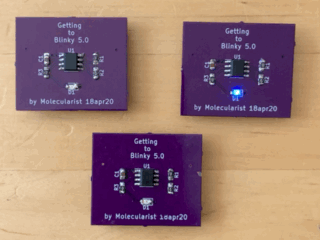










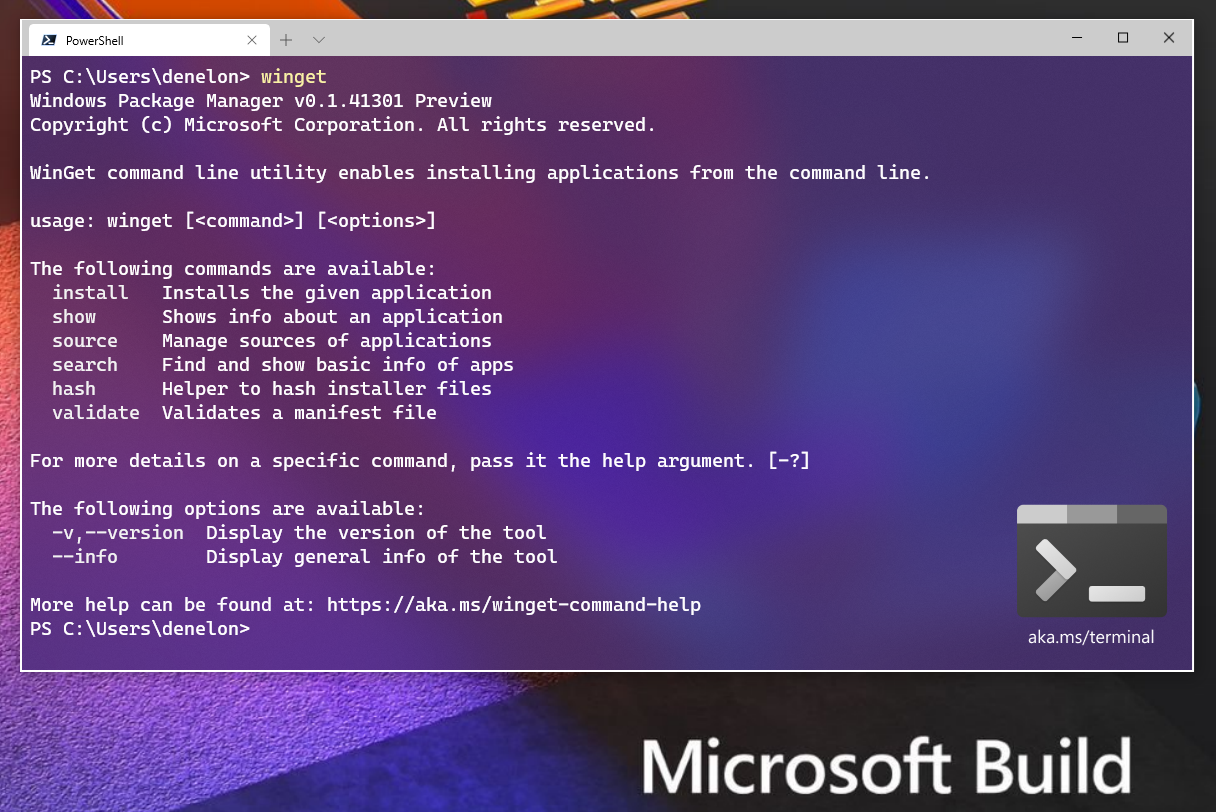
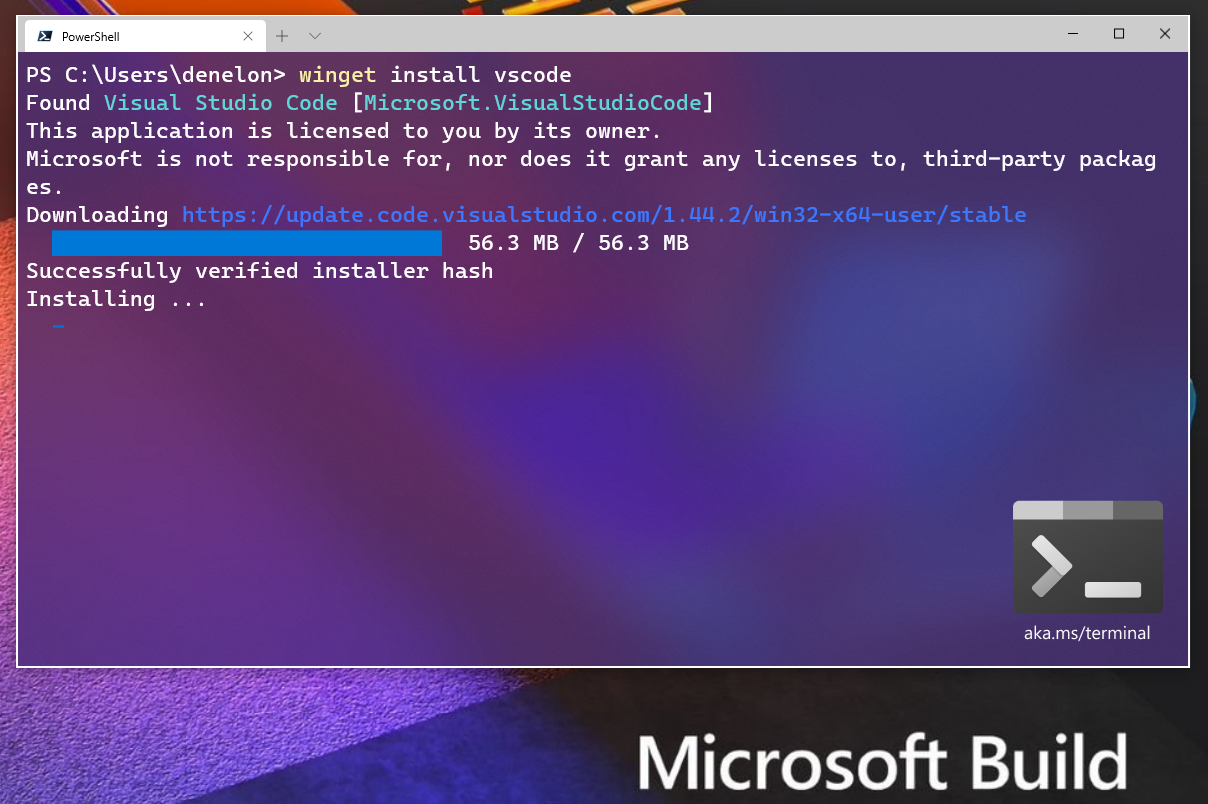



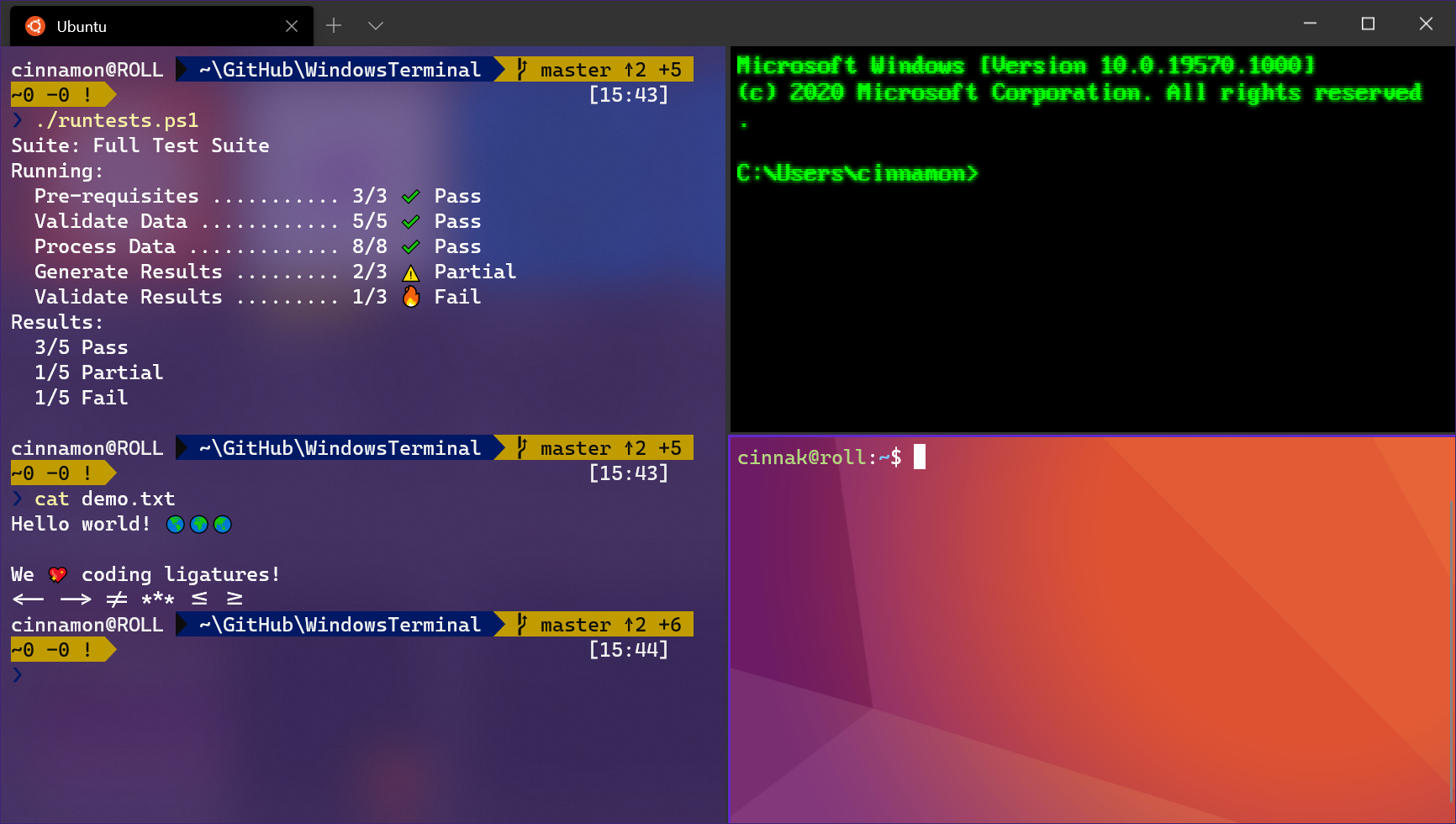
 Lastly, we have included our newest font, Cascadia Code, inside the Windows Terminal package. The default font is set to Cascadia Mono, which is the font variant that does not include programming ligatures. For additional variants of the Cascadia Code font, head over to the
Lastly, we have included our newest font, Cascadia Code, inside the Windows Terminal package. The default font is set to Cascadia Mono, which is the font variant that does not include programming ligatures. For additional variants of the Cascadia Code font, head over to the 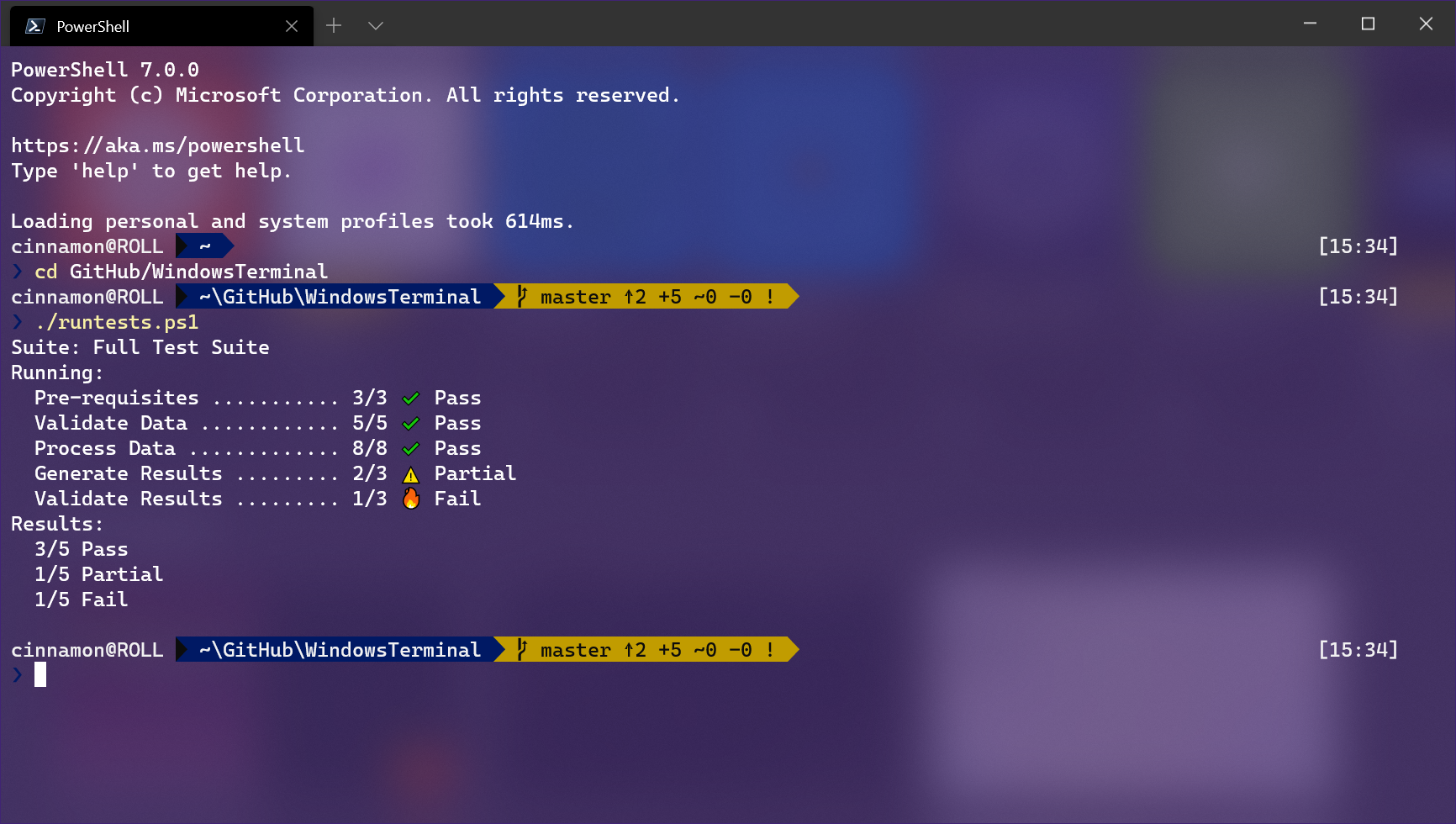






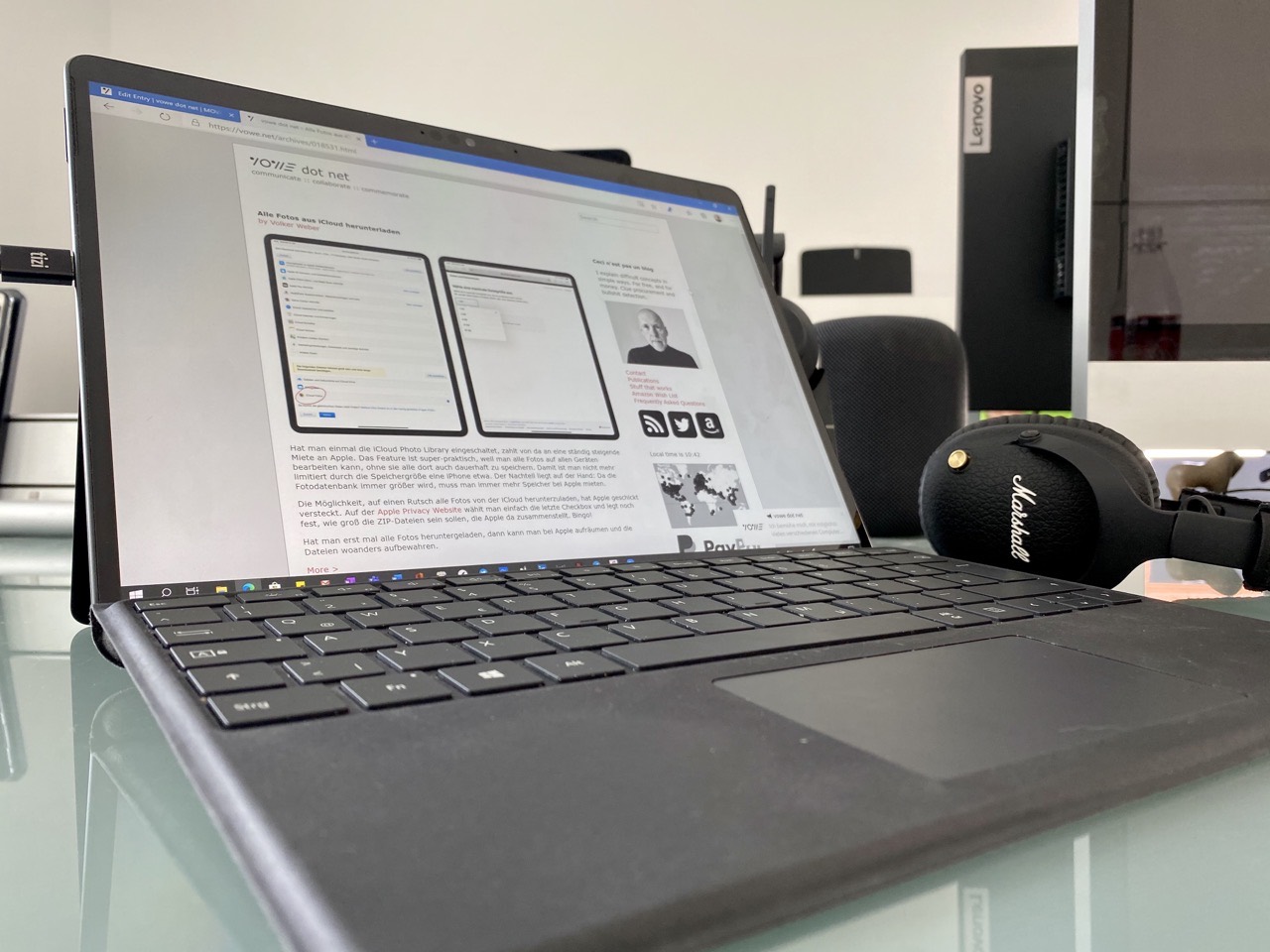
 Imagine yourself as a student. Really work through what the student experience is going to be.
Imagine yourself as a student. Really work through what the student experience is going to be.

